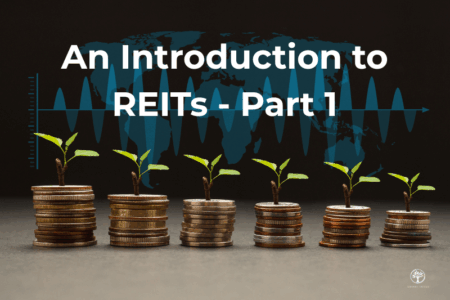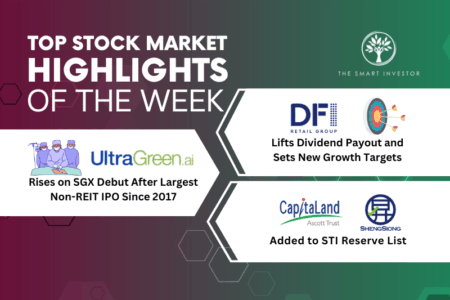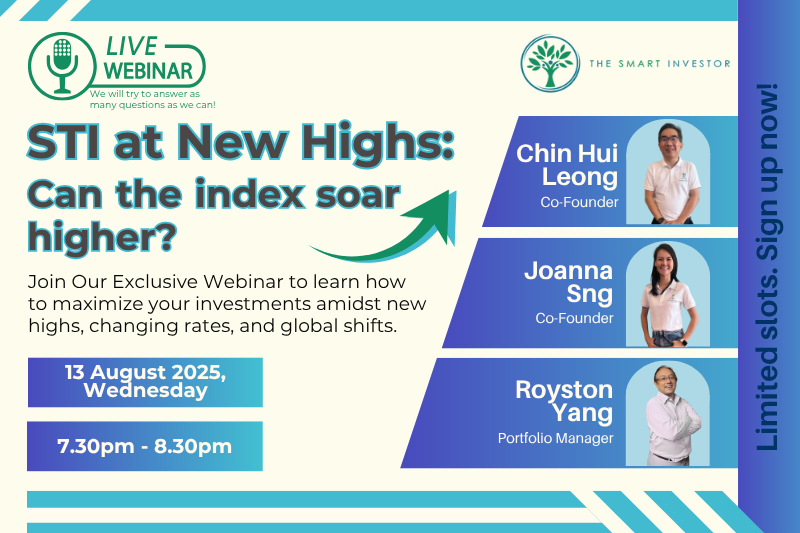Last week, Singapore’s Straits Times Index (SGX: ^STI) touched a new 52-week high.
Yet, as some blue chips surged, others stumbled.
September 2025 painted a mixed picture for Singapore’s largest companies.
While the market rallied, three blue chip losers caught investors’ attention – not just for their monthly declines, but for the stories behind those falls.
Simply said, the question isn’t about “which blue-chip stocks fell?” but rather “are these temporary setbacks or warning signs?”
So, let’s take a look at three of the month’s biggest blue-chip decliners to find out.
For context, the STI was relatively flat in September.
In other words, these three blue chips have underperformed the broader market for the month.
Singtel: Total Return -4.8% for September 2025
Singapore Telecommunications Limited (SGX: Z74), or Singtel, is Singapore’s leading telecommunications provider with operations spanning Asia and Australia.
But if there is one word to describe Singtel’s problems, it would be: Optus.
On 28 September 2025, Australia’s second largest telco suffered an ill-timed outage just as it was trying to recover from a previous network failure less than two weeks ago.
The latest incident impacted around 4,500 people.
There’s a huge timing issue: this outage occurred just as Singtel CEO Yuen Kuan Moon was summoned by Australian authorities to explain the previous outage on 18 September 2025.
The implication?
Optus represented roughly half of Singtel’s revenue for the fiscal year ended 31 March 2025 (FY25).
Prior to the outages, the Aussie telco had been on the road to recovery, with operating profits surging by 55% year on year to A$446 million.
This recovery may be short-lived if the Australian authorities impose tougher measures on Optus. Especially when its upturn in fortunes was supported by mobile price increases implemented in June 2025.
As it stands, all eyes will be on whether authorities will impose penalties or mandatory infrastructure investments.
Despite the stock decline, Singtel’s share price remains close to its decade’s high.
Investors appear to have bought into the telco’s strategic plan to recycle its capital and reward shareholders with a combination of dividends worth between 70% and 90% of its underlying profits coupled with a value realisation dividend of between S$0.03 and S$0.06 annually.
In fact, Singtel delivered the third-best returns for August 2025.
CapitaLand Investment Limited: Total Return -3.9% for September 2025
Next, we have CapitaLand Investment Limited (SGX: 9CI), or CLI.
Here’s something that may catch your eye: the conglomerate is one of Asia’s largest real estate investment managers with S$117 billion in funds under management (FUM) as of 13 August 2025.
That’s interesting, but how do we make sense of its sprawling multi-billion dollar business?
For starters, the group operates two main business segments.
Fee Income-related Business or FRB: Fund management, lodging management, and commercial management.
Real Estate Investment Business or REIB: Listed funds, private funds, and balance sheet investments.
Great, but what else can you learn?
For the first half of 2025 (1H’25), CLI reported a total revenue of S$1.0 billion, down 24% year on year.
That’s not great — but what else should you know?
During this period, FRB revenue remained resilient at S$564 million, relatively unchanged from a year ago, while REIB revenue suffered a massive 43% year-on-year decline to S$519 million.
But wait, here’s the important context: this huge fall is mainly due to the deconsolidation of CapitaLand Ascott Trust (CLAS) (SGX: HMN), a move which took out a sizable chunk of revenue worth S$322 million.
Excluding this CLAS impact, CLI’s revenue actually grew 7% year on year, driven by higher fee income and improved lodging performance.
That sounds so much better, doesn’t it?
Now, let’s move on and take a look at its operating profit.
Unfortunately, operating profit after tax and minority interest (PATMI) came in at S$260 million, down 12% year on year.
This decline was down to a trio of factors, including loss of contribution from divested assets, lower fund performance fees, and the absence of one-off, tax write-backs in 2024.
Nevertheless, CLI has been actively strengthening its platform through two major acquisitions: a 40% stake in SC Capital Partners (completed March 2025, adding S$11 billion in FUM) and 100% of Wingate Group Holdings (completed June 2025, adding S$2 billion in FUM).
The conglomerate’s target? S$200 billion in FUM by 2028.
No interim dividend was declared for 1H’25, as the company pays only annual dividends.
For fiscal year 2024, CLI paid an ordinary dividend of S$0.12 per share in May 2025, along with a special distribution in specie of CapitaLand Integrated Commercial Trust (SGX: C38U) units.
Wilmar International: Total Return -3.7% for September 2025
Unlike the operational issues at Singtel, Wilmar International Limited (SGX: F34) is facing regulatory challenges in Indonesia.
On 25 September 2025, the commodities conglomerate was fined close to US$710 million after the Indonesian Supreme Court overturned an earlier decision to acquit three of its subsidiaries.
As a result, Wilmar expects to report a loss for 2025’s third quarter (3Q’25).
But at the same time, the company maintained that it will be profitable for the full year.
Yet, the question remains: what’s the financial implications on the company?
Take it this way: Wilmar generated US$1.3 billion in free cash flow for 1H’25.
In other words, the cash generated from the first six months of this year is more than enough to cover the fine.
Of course, you could say that this money could have gone to paying down its debt.
You won’t be wrong.
As at 30 June 2025, the group held US$6.8 billion in cash against a total debt of US$29.1 billion for a net debt position of US$22.3 billion.
If we zoom out, the most important thing to know may be Wilmar’s business diversity.
The group can be described as an integrated agribusiness covering the entire commodities value chain, with over 1,000 manufacturing plants across 50 countries.
Here are its four main segments:
Food Products: Consumer packaged goods and bulk edible oils
Feed and Industrial Products: Tropical oils, oilseeds, grains, and sugar merchandising
Plantation and Sugar Milling: Oil palm cultivation and sugarcane milling
Others: Logistics and investment activities
Translation: these products are daily necessities but are subject to fluctuations in commodity prices.
Bottom line: the immediate financial impact appears manageable.
But investors should watch for three things: whether Indonesia imposes additional penalties, how the fine affects Wilmar’s credit ratings and borrowing costs, and whether similar issues emerge in other markets where the group operates.
Get Smart: Opportunity or Value Trap?
Not every stock that falls is worth buying.
The key is distinguishing between temporary setbacks and structural problems.
For investors, the question isn’t whether these stocks fell – instead, it’s whether their profits remain sustainable and the businesses can grow.
Bear in mind, September’s losers may become October’s winners – or they may signal deeper troubles ahead.
The difference lies in the details.
Boost your portfolio’s returns with 5 SGX stocks that promise both stability and steady growth. We bring you the names of these rock-solid stocks, including why they could drive massive dividends over the next few years. If you’re looking to invest for retirement, this guide is a must-read. Click HERE to download now.
Follow us on Facebook, Instagram and Telegram for the latest investing news and analyses!
Disclosure: Chin Hui Leong owns units of CICT.





